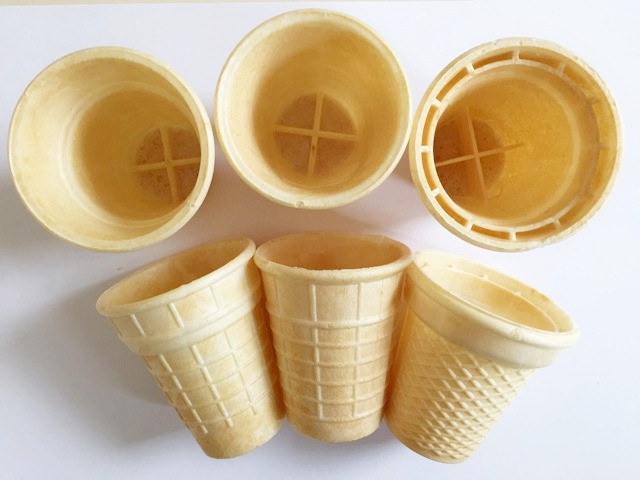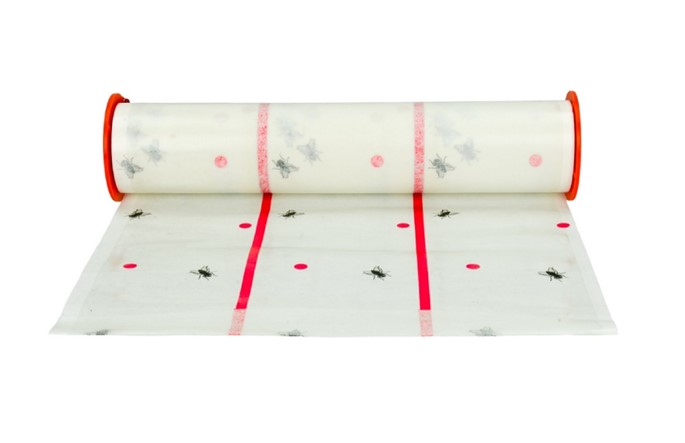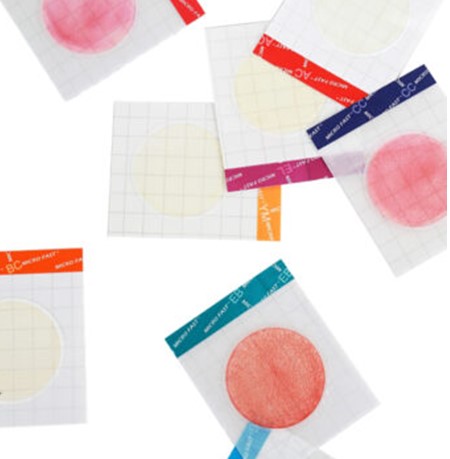Tuk-tuks, lean cows and the luxurious Taj Mahal. What surprises tourists fabulous India
@Getty Images Anyone who travels to India must include the city of Agra in their itinerary, where the symbol of great love rises - the Taj Mahal. Even before the pandemic, I was also lucky to see this wonder of the world as part of an international group of journalists at the invitation of the government of the country. In a sari, every beauty New Delhi met in the evening with the October heat, so much so that it seemed to neither inhale nor exhale! We came to our senses only under the air conditioners of a 5-star hotel at a buffet with dishes from cuisines of all continents. The central event of the press tour was the IHGF handicraft exhibition, which opened at the National Expocenter of the capital. It presented handmade goods: jewelry, home textiles, dishes, bags, cane and bamboo furniture, various handicrafts... Wholesalers and shoppers fromusa , Germany, CANADA, France, Italy, Japan, Italy, United Arab Emirates, Switzerland and other countries. Indian exports of hand made goods are billions of dollars!
Belarusian entrepreneurs also know the way for Indian curiosities and fragrant incense. Then, just like us, they were delighted with silver bracelets, rings, dishes, furniture and much more. The female half of the guests went crazy with 60 shades of blue, pink, yellow, green and other iridescent colors of chiffon saris. In this, every Hindu is a beauty.
Let Indian men forgive me, but we did not meet such people as Shah Rukh Khan, Amitabh Bachchan on the streets of Delhi and Agra. Most of them apparently went to Bollywood for filming. The love stories of this film studio are adored here. Of all the arts in India, cinema is the most important, and the alpha and omega of their whole life is love! A trip to Agra, where in the 16th century Shah Jahan built a white palace-tomb for his beloved Mumtaz Mahal, confirmed this fact.
sacred nurse
We went to the shrine early in the morning, when New Delhi had just woken up. The sun had not yet risen, and motorcycles, three-wheeled tuk-tuks, rare cars were already rushing through the streets of the Indian capital one after another. At first glance, no one observed the rules of the road. However, we did not see a single accident - neither in the city nor on the road to Agra.
But what they were surprised about was the lean red cows, reclining, like patricians in ancient baths, on safety islands - between oncoming traffic flows and in roadside dust. It was obvious that the cow here is a sacred animal. Nurse. India is the world leader in MILK production and in the number of dairy herds! But bulls are not sacred. True, beef is eaten only in 8 of the 29 states of this country. Barefoot - with respect And here we are in Agra, a couple of hundred meters from the famous tomb. The architectural complex is opened by the Great Red Sandstone Gate. After passing through them, we find ourselves in a landscaped garden. In its center is a pool with fountains. The road to the shrine goes through the entire garden. On both sides of the mausoleum, lined with white marble, there are two twin buildings made of red sandstone. This is a guest house and a mosque. Further, already on the other side of the river, - Another garden with the romantic name "Moonlight". The whole building is a mix of Arabic, Persian and Indian architecture.
A real storm of feelings, delight and reverence, of course, gives rise to the soul in the first place, the Taj Mahal. White marble of the five-domed mosque with majestic minarets against the blue sky - isn't it a miracle?! By the way, the color of the facade has a symbolic meaning: according to Hindu traditions, white is a characteristic detail of the dwellings of the Brahmin caste (priests). Close up, the marble walls amaze with unthinkable luxury - interspersed with precious stones in the cladding. Turquoise, agate, carnelian, malachite sparkle in the sun. The mausoleum is reflected in the mirror of the luxurious pool, forever leaving this fantastic picture in the memory and heart.
Hindus go and go to the Taj Mahal... Before the stairs to the mausoleum they always take off their shoes. We take off our shoes too. Further - only barefoot. And if outwardly the Taj Mahal is a luxurious palace, then inside for us, foreigners, it turns out to be cold and lifeless. But the Indians with reverence consider the interior decoration, every inlay, every detail of the interior. By the way, many come here knowing in detail the history of the creation of the mosque and the two lovers resting here. And they may well be guides for others.
Among the famous visitors to the palace: Princess Diana, Prince William and Kate Middleton, Lyudmila and Vladimir Putin, Donald and Melania Trump.
In beauty worthy of the beloved Mughals, one of whose leaders was the descendant of Genghis Khan Shah Jahan, conquered India in the 16th century. They moved the capital from Delhi to Agra. Shah Jahan, while still a prince, took his third wife, Arjumanad Banu Begam, the niece of the emperor's beloved wife, who during the wedding ceremony was given the name Mumtaz Mahal, which means "Palace Decoration". By the way, the emperor had a huge harem, but it was Mumtaz Mahal who became his beloved wife. She was the only one who accompanied her husband on military campaigns. For 17 years of marriage, Shah Jahan and Mumtaz Mahal had 13 children. During the 14th birth, she died. Before her death, she asked her husband not to marry again and to build a mausoleum in her memory. Shah fulfilled the request of his beloved. He devoted the rest of his life to the creation of a grandiose tomb, for which he invited more than 20 thousand craftsmen from all over the empire. They built the Taj Mahal, in beauty worthy of his beloved wife, and in grandeur - the strength of his feelings.
The mausoleum of polished translucent marble looks white in daylight, pink at dawn, and silvery on a moonlit night. Sometimes it seems - he is floating in the air, like the soul of the beautiful Mumtaz Mahal. They say it's because of the heat: the steam emanating from the ground creates a haze that gives rise to an optical illusion...
Erecting a tomb for his beloved, Shah Jahan planned to build his own, on the other side of the river, from black marble. And a black-and-white openwork bridge that would connect the mausoleums of the lovers after death... However, their third son Aurangzeb dealt with the brothers, seized power, dispersed the architects and stone-cutters. He imprisoned his father in one of the towers of the fortress, where he died many years later. By order of Aurangzeb, his ashes were transferred to the Taj Mahal at night and buried.
Now this architectural masterpiece, which has become a pearl of Muslim culture in India, is an instantly recognizable and most photographed structure in the world! For 400 years now, people have been crossing the seas and continents to see the magical monument of love, which the Indian poet Rabindranath Tagore called "a tear on the cheek of eternity."
| Tamara MARKINA,.
| Photo: the author and from open Internet sources
READ ALSO
Belarusian entrepreneurs also know the way for Indian curiosities and fragrant incense. Then, just like us, they were delighted with silver bracelets, rings, dishes, furniture and much more. The female half of the guests went crazy with 60 shades of blue, pink, yellow, green and other iridescent colors of chiffon saris. In this, every Hindu is a beauty.
Let Indian men forgive me, but we did not meet such people as Shah Rukh Khan, Amitabh Bachchan on the streets of Delhi and Agra. Most of them apparently went to Bollywood for filming. The love stories of this film studio are adored here. Of all the arts in India, cinema is the most important, and the alpha and omega of their whole life is love! A trip to Agra, where in the 16th century Shah Jahan built a white palace-tomb for his beloved Mumtaz Mahal, confirmed this fact.
sacred nurse
We went to the shrine early in the morning, when New Delhi had just woken up. The sun had not yet risen, and motorcycles, three-wheeled tuk-tuks, rare cars were already rushing through the streets of the Indian capital one after another. At first glance, no one observed the rules of the road. However, we did not see a single accident - neither in the city nor on the road to Agra.
But what they were surprised about was the lean red cows, reclining, like patricians in ancient baths, on safety islands - between oncoming traffic flows and in roadside dust. It was obvious that the cow here is a sacred animal. Nurse. India is the world leader in MILK production and in the number of dairy herds! But bulls are not sacred. True, beef is eaten only in 8 of the 29 states of this country. Barefoot - with respect And here we are in Agra, a couple of hundred meters from the famous tomb. The architectural complex is opened by the Great Red Sandstone Gate. After passing through them, we find ourselves in a landscaped garden. In its center is a pool with fountains. The road to the shrine goes through the entire garden. On both sides of the mausoleum, lined with white marble, there are two twin buildings made of red sandstone. This is a guest house and a mosque. Further, already on the other side of the river, - Another garden with the romantic name "Moonlight". The whole building is a mix of Arabic, Persian and Indian architecture.
A real storm of feelings, delight and reverence, of course, gives rise to the soul in the first place, the Taj Mahal. White marble of the five-domed mosque with majestic minarets against the blue sky - isn't it a miracle?! By the way, the color of the facade has a symbolic meaning: according to Hindu traditions, white is a characteristic detail of the dwellings of the Brahmin caste (priests). Close up, the marble walls amaze with unthinkable luxury - interspersed with precious stones in the cladding. Turquoise, agate, carnelian, malachite sparkle in the sun. The mausoleum is reflected in the mirror of the luxurious pool, forever leaving this fantastic picture in the memory and heart.
Hindus go and go to the Taj Mahal... Before the stairs to the mausoleum they always take off their shoes. We take off our shoes too. Further - only barefoot. And if outwardly the Taj Mahal is a luxurious palace, then inside for us, foreigners, it turns out to be cold and lifeless. But the Indians with reverence consider the interior decoration, every inlay, every detail of the interior. By the way, many come here knowing in detail the history of the creation of the mosque and the two lovers resting here. And they may well be guides for others.
Among the famous visitors to the palace: Princess Diana, Prince William and Kate Middleton, Lyudmila and Vladimir Putin, Donald and Melania Trump.
In beauty worthy of the beloved Mughals, one of whose leaders was the descendant of Genghis Khan Shah Jahan, conquered India in the 16th century. They moved the capital from Delhi to Agra. Shah Jahan, while still a prince, took his third wife, Arjumanad Banu Begam, the niece of the emperor's beloved wife, who during the wedding ceremony was given the name Mumtaz Mahal, which means "Palace Decoration". By the way, the emperor had a huge harem, but it was Mumtaz Mahal who became his beloved wife. She was the only one who accompanied her husband on military campaigns. For 17 years of marriage, Shah Jahan and Mumtaz Mahal had 13 children. During the 14th birth, she died. Before her death, she asked her husband not to marry again and to build a mausoleum in her memory. Shah fulfilled the request of his beloved. He devoted the rest of his life to the creation of a grandiose tomb, for which he invited more than 20 thousand craftsmen from all over the empire. They built the Taj Mahal, in beauty worthy of his beloved wife, and in grandeur - the strength of his feelings.
The mausoleum of polished translucent marble looks white in daylight, pink at dawn, and silvery on a moonlit night. Sometimes it seems - he is floating in the air, like the soul of the beautiful Mumtaz Mahal. They say it's because of the heat: the steam emanating from the ground creates a haze that gives rise to an optical illusion...
Erecting a tomb for his beloved, Shah Jahan planned to build his own, on the other side of the river, from black marble. And a black-and-white openwork bridge that would connect the mausoleums of the lovers after death... However, their third son Aurangzeb dealt with the brothers, seized power, dispersed the architects and stone-cutters. He imprisoned his father in one of the towers of the fortress, where he died many years later. By order of Aurangzeb, his ashes were transferred to the Taj Mahal at night and buried.
Now this architectural masterpiece, which has become a pearl of Muslim culture in India, is an instantly recognizable and most photographed structure in the world! For 400 years now, people have been crossing the seas and continents to see the magical monument of love, which the Indian poet Rabindranath Tagore called "a tear on the cheek of eternity."
| Tamara MARKINA,.
| Photo: the author and from open Internet sources
READ ALSO



























































